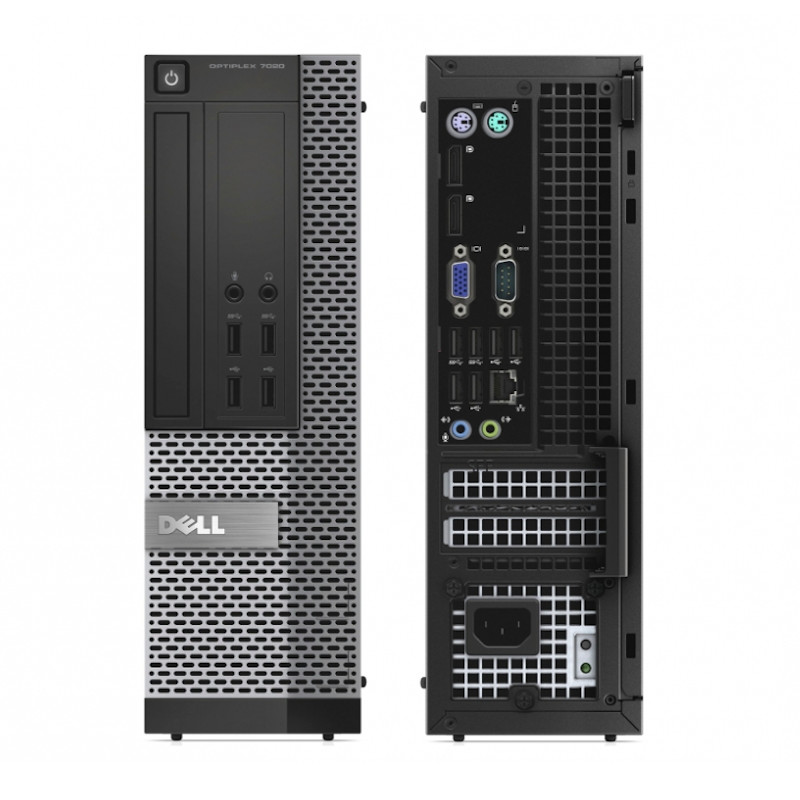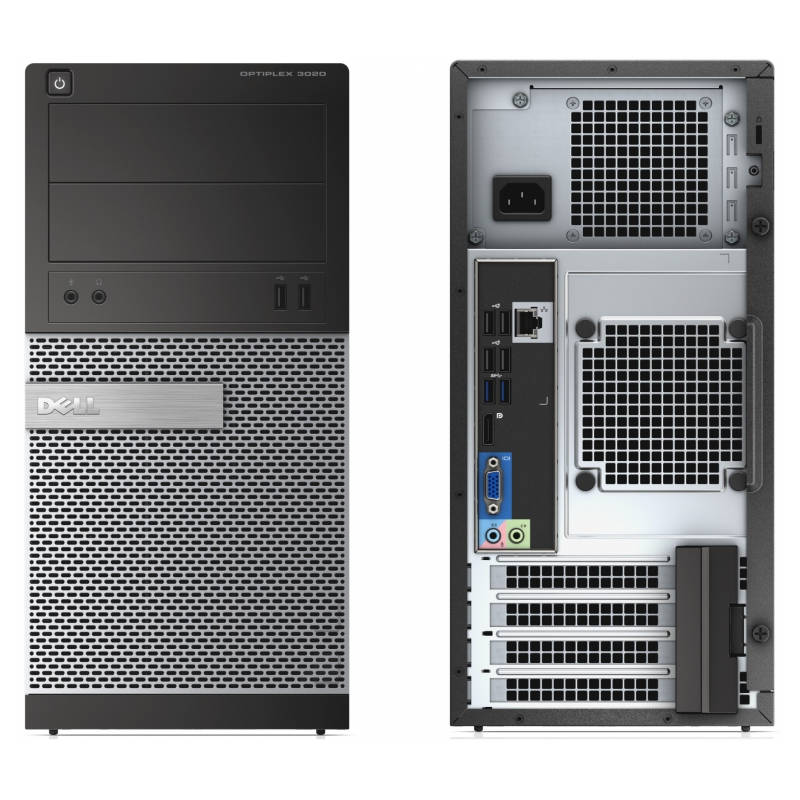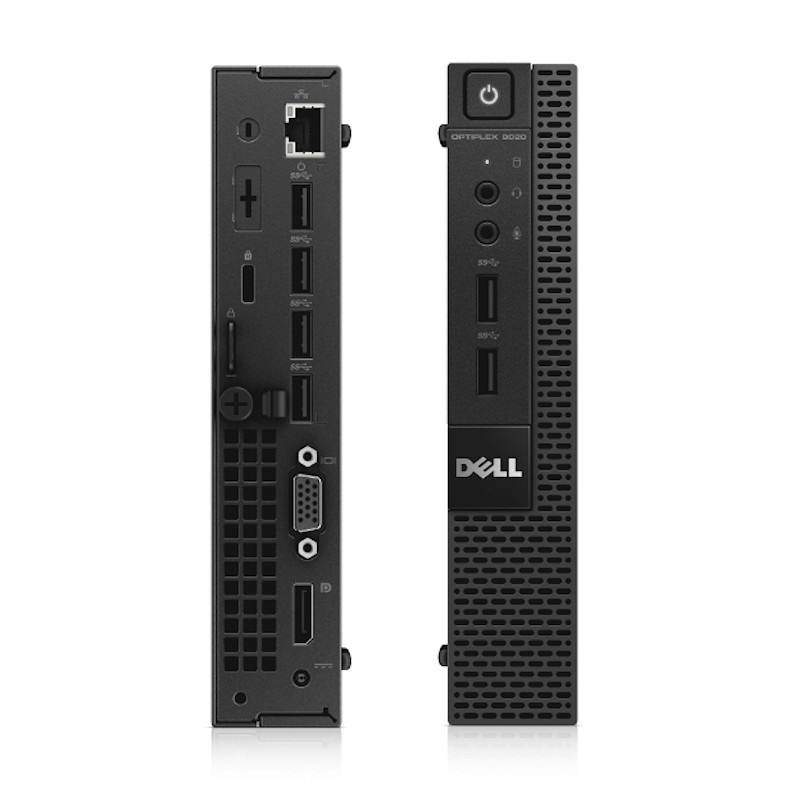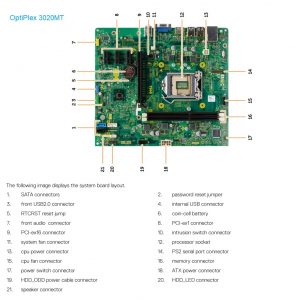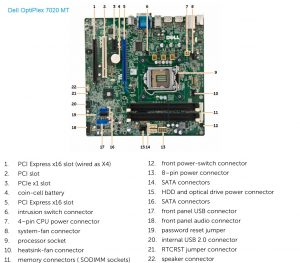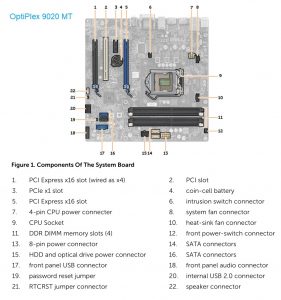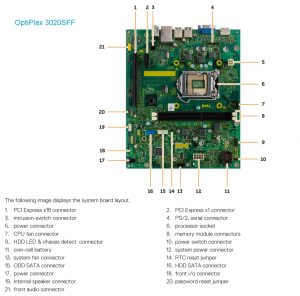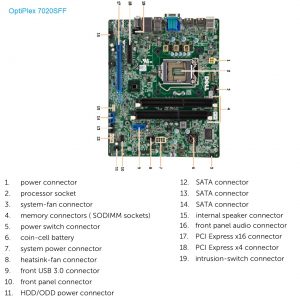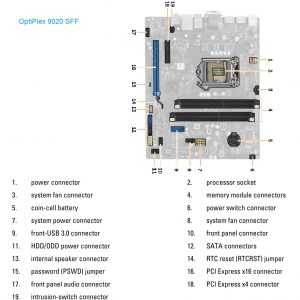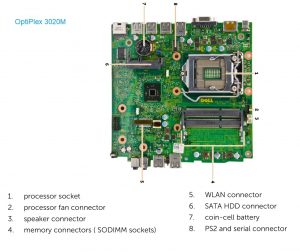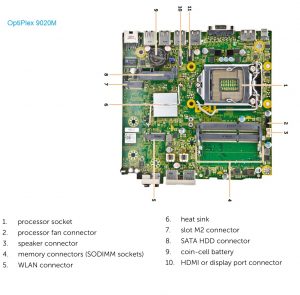Differences between Dell OptiPlex 3020 vs. 7020 vs. 9020
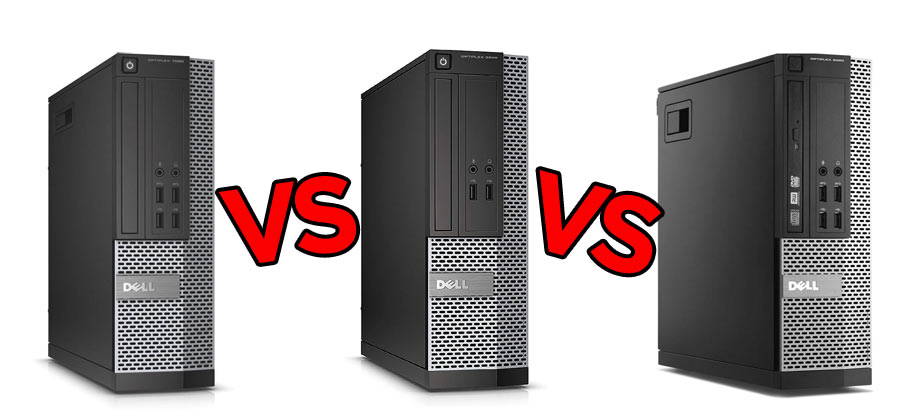
Disclaimer
We are supported by our readers. When you use links on our site to buy products, we may earn an affiliate commission. As an Amazon associate we earn from qualifying purchases.
We are supported by our readers. When you purchase through links on our site, we may earn commission.
This article will review the differences between the tree most popular form factors – Mini Tower, Small form factor, and Micro – of Dell’s OptiPlex 3020, 7020, and 9020 models.
If you are looking to buy any of these desktop models, for your kids, or to cover your home and office needs, have a look at our article about Dell’s best refurbished desktop computers. If you are looking to compare any two desktop model visit our compare page.
The main differences between the Dell OptiPlex 3020, 7020, and 9020:
- The OptiPlex 3020 is the cheapest and usually comes with fewer features like – ports, CPU options, RAM slots, reduced chipset, lack of Intel vPro, and others.
- The OptiPlex 7020 is the mid range. It has almost all the features of the OptiPlex 9020, with maybe a few minor exceptions. For example max RAM is 16 GB and for the 9020 is 32GB.
- The OptiPlex 9020 is the most expensive and comes with the full set of features.
Below we give more detailed info about the difference between 3020, 7020, 9020 and their form factor.
Affordable refurbished options
Differences between Dell OptiPlex 3020 vs. 7020 vs. 9020 Mini Tower
The three mini tower models have the same physical size and dimensions. Weight wise the OptiPlex 3020 is a bit lighter than the other two models.
CPU options for the OptiPlex 3020 did not include an Intel Core i7 processor. However, installing one yourself is not a problem.
Another important difference between the OptiPlex 3020 and the 7020/9020 is the ability to install 4xDIMM modules in the later. Additionally, OptiPlex 9020 and 7020 will run 32 GB of RAM. Although, according to the specification you can only slot 16 GB of ram in OptiPlex 7020, but later BIOS updates made possible for 32 GB.
The Dell OptiPlex 9020 MT and 7020 MT are using the Intel Q87 chipset, while the 3020 is using Intel H81 which does not support PCIe 3.0. This means, that if you plan to install a dedicated GPU, and care for optimal performance, best is to go for the OptiPlex 9020 or 7020.
Concerning USB connectivity, the three models are very similar with the only difference being OptiPlex 3020 having 2 USB3.0 ports less.
- Dell OptiPlex 3020MT motherboard layout
- Dell OptiPlex 7020MT motherboard layout
- Dell OptiPlex 9020MT motherboard layout
OptiPlex 7020 and 9020 have 2x DisplayPorts and a VGA port, while the 3020 has a VGA and only one DisplayPort.
If you plan to use Serial or PS2 ports, best is to go for the 7020 or 9020. The 3020 model can have Serial and PS2 ports but they are optional.
There is a major difference between the PCIe arrangements. The most important one being that a PCIe 3.0 x16 slot is available only with the OptiPlex 7020 and 9020. The Dell 3020 has a PCIe x16 slot, but it is version 2.0. All PCIe slots are full height.
In the Dell OptiPlex 3020 MT, you will be able to plug up to 3x SATA 3.0* drives. While, the 7020 and 9020 support up to 4x SATA 3.0* drives.
For all three models, the power supply is a standard ATX and is rated at 290 Watts. Note, that later generations are rated at around 250 Watts (e.g. OptiPlex 7050 MT at 240W), so if you plan to install a more powerful dedicated GPU, this should be taken into account. Moreover, later generations are using a non-standard ATX power supply form factor. This is of course not nice as you won’t be able to upgrade to a more powerful one.
| Model: | Dell OptiPlex 3020 MT | Dell OptiPlex 7020 MT | Dell OptiPlex 9020 MT |
|---|---|---|---|
| Form factor: | Mini Tower | Mini Tower | Mini Tower |
| CPU options: | Intel Gen4 i3/i5; Celeron; Pentium; | Intel Gen4 i3/i5/i7; Pentium; | Intel Gen4 i3/i5/i7; |
| Chipset: | Intel H81 | Intel Q87 | Intel Q87 |
| Dedicated GPU* | GeForce GTX 1660 Super | GeForce GTX 1660 Super | GeForce GTX 1660 Super |
| RAM slots: | (2x) DIMM DDR3-1600 | (4x) DIMM DDR3-1600 | (4x) DIMM DDR3-1600 |
| Max RAM: | 16 GB | 32 GB | 32 GB |
| USB Ports: | (2x) USB3.0; (6x) USB2.0; | (4x) USB3.0; (6x) USB2.0; | (4x) USB3.0; (6x) USB2.0; |
| Video Ports: | DisplayPort 1.2; VGA; | (2x) DisplayPort 1.2; VGA; | (2x) DisplayPort 1.2; VGA; |
| Other Ports: | RJ45; Hdph; Mic; Line-Out; Line-In; | RJ45; Hdph; Mic; Line-Out; Line-In; Serial; (2x) PS2; | RJ45; Hdph; Mic; Line-Out; Line-In; Serial; (2x) PS2; |
| Optional Ports: | Serial+PS2; | N.A. | N.A. |
| SATA**: | (3x) SATA 3.0 | (4x) SATA 3.0 | (4x) SATA 3.0 |
| PCIe: | PCIe 2.0 x16; (3x) PCIe 2.0 x1 | PCIe 3.0 x16; PCIe x1; PCIe x16(wired x4); PCI; | PCIe 3.0 x16; PCIe x1; PCIe x16(wired x4); PCI; |
| M.2 slots: | N.A. | N.A. | N.A. |
| Drive bays: | (2x) 2.5/3.5-inch; (2x)5.25-inch | (2x) 2.5/3.5-inch; (2x) 5.25-inch | (2x) 2.5/3.5-inch; (2x) 5.5 inch |
| Hard Drive: | max 1TB | SATA max 1TB | SATA max 2TB; RAID 0 & 1; |
| PSU: | ATX 290 W | ATX 290 W | ATX 290 W |
| Weight: | 7.6 kg (16.75 lb) | 9.40 kg (20.72 lb) | 9.40 kg (20.72 lb) |
| Price | Check Price | Check Price | Check Price |
* Dedicated GPU warning: Check if your model’s power supply has enough power. Additionally some PSUs don’t have an auxiliary PCIe power connector and you may need to use a SATA to PCIe power adapter.
** Very often some of the SATA slots used for the ODD (Optical Disc Drive) will be version 2.0.
Differences between Dell OptiPlex 3020 vs. 7020 vs. 9020 SFF
This section is reviewing differences between the OptiPlex 3020, 7020 and 9020 Small Form Factor (SFF) only. For differences in between the MT models see the section above, and for the comparison of the Micro models check the next one.
The Dell OptiPlex 3020 SFF is not offered with an Intel Core i7 CPU, but it is able to run one. It also might come with the not so powerful Celeron or Pentium options which should be avoided.
Two different chipsets are used: Intel H81 for the 3020 and Intel Q87 for the 7020/9020. Important for you might be the fact, that only the Q87 has a PCIe 3.0 bus.
Concerning RAM upgradability, only the OptiPlex 9020 SFF supports up to 32 GB and the rest are up to 16 GB. You will find 4x DIMM sockets in the 9020 and 7020, and only two in the 3020.
- Dell OptiPlex 3020SFF motherboard layout
- Dell OptiPlex 7020SFF motherboard layout
- Dell OptiPlex 9020SFF motherboard layout
All three of the devices have USB 2.0 and USB 3.0 ports, with the 3020 having 2x USB3.0 less. Just like with the Mini Tower model, the 3020 can have Serial and PS2 ports but they are optional.
Regarding video ports, you will find only 1x DisplayPort in the OptiPlex 3020. So, if you want to use more than one display, the 9020 and 7020 are the natural choice.
Internal connectivity is much better in the 7020 and 9020 where you will find a PCIe 3.0 x16 slot (half height). Note that the slot is very close to the PSU. Thus, if you plan to install a dedicated GPU it should not be too thick, otherwise it will not fit. It is pity that Dell decided to locate the port so close to the power supply. For example in the previous model 9010 SFF, the PCIe Gen3 x16 is positioned away from the power supply, and installing a wider GPU is not a problem.
The two models also have 3x SATA III ports, versus 2x SATA III for the OptiPlex 3020.
All in all, for most users the Dell OptiPlex 3020 SFF will be more than adequate, but if you plan to use two DisplayPort monitors you should probably go with the 7020 or 9020 model.
| Model: | Dell OptiPlex 3020 SFF | Dell OptiPlex 7020 SFF | Dell OptiPlex 9020 SFF |
|---|---|---|---|
| Form factor: | Small Form Factor | Small Form Factor | Small Form Factor |
| CPU options: | Intel Gen4 i3/i5; Celeron; Pentium; | Intel Gen4 i3/i5/i7; Pentium; | Intel Gen4 i3/i5/i7; |
| Chipset: | Intel H81 | Intel Q87 | Intel Q87 |
| Dedicated GPU* | GeForce GT 1030 Low Profile | GeForce GTX 1650 Low Profile | GeForce GTX 1650 Low Profile |
| RAM slots: | (2x) DIMM DDR3-1600 | (4x) DIMM DDR3-1600 | (4x) DIMM DDR3-1600 |
| Max RAM: | 16 GB | 16 GB | 32 GB |
| USB Ports: | (2x) USB3.0; (6x) USB2.0; | (4x) USB3.0; (6x) USB2.0; | (4x) USB3.0; (6x) USB2.0; |
| Video Ports: | DisplayPort 1.2; VGA; | (2x) DisplayPort 1.2; VGA; | (2x) DisplayPort 1.2; VGA; |
| Other Ports: | RJ45; Hdph; Mic; Line-Out; Line-In; | RJ45; Hdph; Mic; Line-Out; Line-In; Serial; (2x) PS2; | RJ45; Hdph; Mic; Line-Out; Line-In; Serial; (2x) PS2; |
| Optional Ports: | Serial+PS2; | N.A. | N.A. |
| SATA**: | (2x) SATA 3.0 | (3x) SATA 3.0 | (3x) SATA 3.0 |
| PCIe: | PCIe 2.0 x16 (low profile); PCIe 2.0 x1 (low profile); | PCIe 3.0 x16 (low profile); PCIe x16 (wired x4, low profile); | PCIe 3.0 x16 (low profile); PCIe x16 (wired x4, low profile); |
| M.2 slots: | N.A. | N.A. | N.A. |
| Drive bays: | 2.5/3.5-inch; 5.25-inch(slim) | 2.5/3.5-inch; 5.25-inch(slim) | 2.5/3.5-inch; 5.25-inch(slim) |
| Hard Drive: | max 1TB | SATA max 1TB | SATA max 2TB; RAID 0 & 1; |
| PSU: | 255 W | 255 W | 255 W |
| Weight: | 5 kg (11.02 lb) | 6.00 kg (13.22 lb) | 6.00 kg (13.22 lb) |
| Price | Check Price | Check Price | Check Price |
* Dedicated GPU warning: Check if your model’s power supply has enough power. Additionally some PSUs don’t have an auxiliary PCIe power connector and you may need to use a SATA to PCIe power adapter.
** Very often some of the SATA slots used for the ODD (Optical Disc Drive) will be version 2.0.
Differences between Dell OptiPlex 3020 vs. 9020 Micro
The Dell OptiPlex 3020 and 9020 Micro only models will be compared in this section.
The Dell OptiPlex 9020M has the same form factor and weight as the 3020M. For both of them, inside the case you will be able to fit a single 2.5-inch drive, but only the 9020 Micro has an M.2 2280 slot which supports a SATA SSD.
WiFi(dual band)/Bluetooth4.0 is optional for the two models. You will be able to tell if the desktop has the module inside by the existence of an external antenna connector. If you plan to use PS2 or Serial port connected devices you should be careful, as the optional Serial+PS2 add-on has a proprietary connector. In order to use it, you will need a special adapter which we couldn’t find anywhere.
- Dell OptiPlex 3020 Micro motherboard layout
- Dell OptiPlex 9020 Micro motherboard layout
The 3020 was not offered with an Intel Core i7 processor, but you will be able to install one if you care to do this CPU upgrade. Just make sure it is not more powerful than 35W. Like with the bigger form factor models, the chipset being used is different: Intel H81 for the 3020M and Intel Q87 for the 9020M.
| Model: | Dell OptiPlex 3020M | Dell OptiPlex 9020M |
|---|---|---|
| Form factor: | Micro | Micro |
| CPU options: | Intel Gen4 i3/i5; Celeron; Pentium; | Intel Gen4 i3/i5/i7; |
| Chipset: | Intel H81 | Intel Q87 |
| RAM slots: | (2x) SODIMM DDR3-1600 | (2x) SODIMM DDR3-1600 |
| Max RAM: | 16 GB | 16 GB |
| USB Ports: | (2x) USB3.0; (4x) USB2.0; | (6x) USB3.0 |
| Video Ports: | DisplayPort 1.2; VGA; | DisplayPort 1.2; VGA; |
| Other Ports: | RJ45; Headset; Mic/Hdph; | RJ45; Headset; Mic/Hdph; |
| Optional Ports: | WiFi antenna; Serial+PS2; | WiFi antenna; HDMI; DisplayPort; Serial; Serial+PS2; |
| SATA: | SATA 3.0 | SATA 3.0 |
| PCIe: | N.A. | N.A. |
| M.2 slots: | M.2 2230 (WiFi) | M.2 2230 (WiFi/BT); M.2 2280 B-Key (SATA only); |
| Drive bays: | 2.5-inch | 2.5-inch |
| Hard Drive: | SATA max 1TB | SATA max 2TB; M.2 max 256GB |
| PSU: | 65 W | 65 W |
| Weight: | 1.28 kg (2.82 lb) | 1.28 kg (2.82 lb) |
| Price | Check Price | Check Price |
There is really no significant difference between the two Micro models. The additional M.2 SATA drive and the optional video ports are not enough to make us buy the OptiPlex 9020M. If you are looking at refurbished models and not sure what to buy – just go for the cheaper one.
Related
Desktops
Dell refurbished desktop computers
Looking to buy a certified refurbished Dell desktop computer? This article is for you.
Refurbished Desktops
Best Refurbished Mini PC for under $200 (2020)
Best refurbished mini PCs money can buy. Read about them in our article.
Guides
Best Dedicated GPU for Dell OptiPlex
Find the best GPU options for all the Dell OptiPlex models.
Guides
Difference between Dell OptiPlex 3040, 5040, 7040
Review of the differences between Dell OptiPlex 3040, 5040, and 7040 desktop computers.

